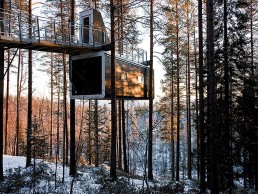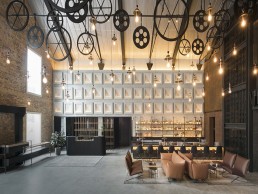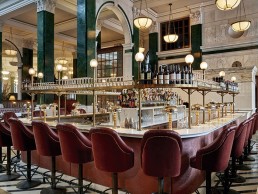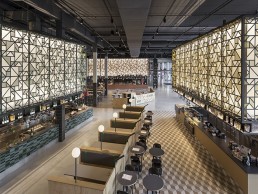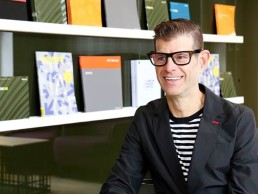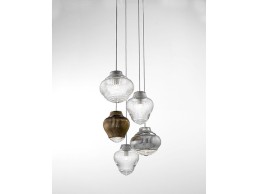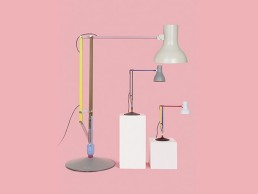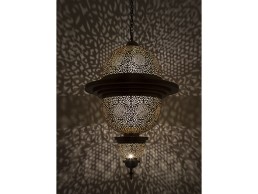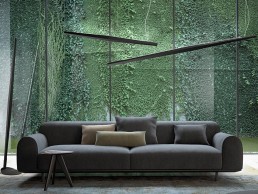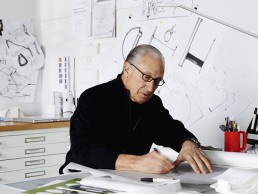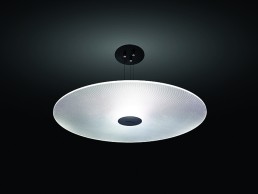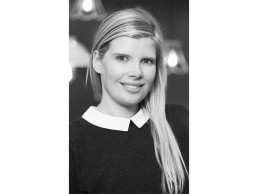Treehotel, Sweden
Offering a unique hotel experience, Treehotel in Harads, Sweden, offers tree rooms with contemporary design in the middle of unspoiled nature. Owned by Kent Lindvall and Britta Jonsson-Lindvall, the hotel is situated near the Lule River and as guests arrive they embark on a stroll through the beautiful natural surroundings before arriving at their ‘tree room’, where they get a fantastic view of the Lule River valley, miles of forest and the powerful river itself. Suspended four-to-six-metres above the ground, since it first opened in 2009, Treehotel has grown like a jigsaw puzzle, with the most recent addition opening in January this year. The new 7th Room is a collaboration between architectural practice Snøhetta and lighting brand ateljé Lyktan; having worked to a tight turnaround of just nine months, Snøhetta created a space that underlines the feeling of being inside the pine tree crowns of the forest, while making use of a lighting design concept that provides as much natural light as possible into the room.
Snøhetta’s Jenny Osuldsen tells darc: “Harads is located close to the polar circle with extreme light conditions. We wanted to create light fixtures that could cope with these extreme conditions throughout the year, providing artificial light that is dimmable and flexible in terms of direction; we maximised natural light through generous windows.
“We also wanted the design of the new light fixtures in 7th Room to feel as integrated in the architecture as possible and keep a real focus on the light and its functionality.”
Mirroring the 7th Room's wooden cabin structure, with dark wood on the outside and light, warm wood on the inside, the lighting fixtures are made of two pieces of birch veneer with two strips of LED light. The black surface of the outside of the light fixture can be seen as a statement, focusing on the dark as the absence of light. A suspended light was designed specifically for this project's lounge, along with new wall lights for the bedrooms. The other lighting requirements were chosen from ateljé Lyktan’s existing catalogue, with guidance from engineer partner WSP Sverige based in Lulea, Sweden.
“We designed prototypes for this project. The visitors, the maintenance team, and the client need to be able to see how they work over time. We are in the process of developing the prototypes into finished products and a second stage development version was shown in Milan in April. We hope to have a finished product by next year.
“One of the reasons this project really stood out was the height of the columns. They were a real constraint in the early stages as we had to make sure they could be executed on-site, leaving the forest and landscape as untouched as possible. Everything was built on site and the lifting of the building with two cranes was the highlight of the structural solution – it was the biggest challenge that was executed excellently on site.
“The other stand out features are the sixth façade, which is a photograph on the underside of the building, and the ‘net’ – an airy balcony net suspended around a pine tree that links the two bedrooms together with the Northern Light Lounge 10-metres above the ground.”
The beginnings of Treehotel takes us back to a fishing trip in Russia with a group of Kent’s friends, who also happened to be three of Sweden’s foremost architects – Bertil Harstrom, Thomas Sandell and Marten Cyren. Inspired by the film 'The Tree Lover' by Jonas Selberg Augustsen - a tale of three men from the city who go back to their roots by building a tree house together, Kent floated the idea of 'designer hotel rooms' in the middle of the forest, which sparked an interest among the group of architects. Before leaving Russia they agreed to design one room each, as friends working together, even though they were working for competing firms. This friendly collaboration turned out to be very important to the development of Treehotel and resulted in a UFO, a Birds Nest, Cabin, Mirrorcube, and a Blue Cone. These spectacular creations attracted a lot of attention and the large Dragonfly conference building was then added ahead of the 7th Room suite, which, as mentioned, was completed this year.
ateljé Lyktan was first contacted by Treehotel in 2009 to work with the architects on the various tree cabins; all of the products featured in these rooms are unique and were produced specifically for the project. Thomas Holm of ateljé Lyktan tells darc: "For the Mirrorcube, the Eagle pendant was designed in conjunction with Tham and Widegard; in Dragonfly there is the Cube in pendant and wall versions - designed in collaboration with Sami Riintala; in Blue Cone there is the Hangover floor and pendant fixture, this was designed by Thomas Sandell; and in The Cabin, there's the Tipi floor and ceiling fixtures, designed by Marten and Gustav Cyren.
"For the Birdsnest and UFO rooms, architectural lighting was developed in conjunction with Bertil Harstrom, as was the Sauna,which features the Bikini ceiling light.”
Since the project, some of the lighting prototypes have been developed further and incorporated into ateljé Lyktan's main range, including Tipi featured in The Cabin and Eagle featured in Mirrorcube. Architect Bertil Harstrom tells darc: “Treehotel was a small low budget project that worked because everyone involved was enthusiastic and wanted to make it work. The hotel rooms are all very individual and the challenge was to develop a design that was functional for each room.
“The clients, Kent and Britta are extraordinary, the architects involved worked on small budgets and the collaboration with ateljé Lyktan was based on the same conditions. In the beginning there were some doubts as to whether or not the project could be successful, but today Treehotel is well-known all over the world.
“Why? Probably a mix of good timing, correct eco profile, design and originality. Treehotel is proof that small projects in the middle of nowhere can be a good business!”
Treehotel gives people the chance to experience nature among the tree-tops, while also providing a uniquely designed housing experience. It is a place where nature, ecological values, comfort and modern design combine for an exciting adventure.
The Warehouse Hotel, Singapore
Located on the bank of Robertson Quay, The Warehouse Hotel is a locally designed boutique heritage property from Singapore hospitality firm The Lo & Behold Group. Renovated from an iconic 1895 warehouse, the building is situated along a famous trade route that once connected Asia and the Straits of Malacca. In the early 20th century, the premises were recognised as a hotbed of activity for secret societies, business deals and underground spirit distilling. Today, The Warehouse Hotel is a meticulously restored, 37-room destination that has redefined the notion of ‘industrial design’ by incorporating elegance, focus, softness and cohesion throughout.
The interiors are designed by the award-winning home-grown agency Asylum, which set out to revisit some of Singapore’s lost history by integrating a selection of industrial-like textures balanced with modern luxe finishes. The lobby and reception area serve as a communal space and comprise of the hotel’s signature restaurant and bar, showcasing décor and furnishings reminiscent of the past. Exposed brick walls line both sides of the entrance as an appreciation of the building’s heritage, while custom lights designed by Asylum are inspired by pulleys found in godowns and line the double-volume ceilings, defining the ambience of the lobby lounge.
A touch of local flavour is further introduced by way of an in-house restaurant, Po, a refined Singaporean concept that presents modern-day local flavours and is designed to provide an almost-at-home dining experience with a juxtaposition of furniture materials used. The crystal-beaded lights featured in the space are supposed to feel like lamps from one’s grandmother’s dining room.
In the bedrooms Asylum set out to create spacious and welcoming rooms designed in muted tones with many offering double-height ceilings, peaked roofs and original industrial details. With no two rooms exactly the same, each exudes a sense of modern luxe.
Speaking exclusively with darc, Asylum’s Creative Director, Chris Lee explained the key requirements behind the decorative lighting elements featured within the hotel: “Lighting is a key component in creating the right ambience for the hotel. We also had to make sure there was a ‘social media worthy’ component, which is where the lobby lighting comes in, which is inspired by vintage pulleys and wheels from the bygone era of the godowns.”
“We also had to make sure we used LED lamps as per the client’s request,” adds Takeo Sugamata of lighting design practice SWITCH. “The LEDs had to be warm enough to create the right ambience (2200K) and had to be dimmable without flickering. We compared several filament style LED lamps and tested the compatibility with a dimmer during the construction stage to ensure the lighting could transcend from day to night and create a different ambience through the course of the day.”
Copper, metal and marble are some of the key materials used throughout the hotel and as such most of the lighting selected continued with this theme in order to tie everything together; there are also some vintage pieces that were specially procured to give the space more of a unique feel.
Working in collaboration with SWITCH, Asylum looked to bring the various spaces alive through the lighting. “We have worked with SWITCH on many projects previously and try to push most of our clients to engage with a lighting designer as we feel, in order for the space to come alive, lighting is a key component,” says Lee. “The mood from day to night has to be different, lighting from a restaurant to a retail store to a hotel all have different requirements and as much as we would like to wear as many hats as possible, we don’t claim to be the experts when it comes to lighting design.
“The hanging lamps are the feature piece in the space, however it was important to create a background for them. The lamps need to be dimmed down quite a lot so that people’s attention goes to the pulleys as well as the lamps themselves. By uplighting the pitched ceiling we tried to make the pulleys and truss structure look like a silhouette.”
Asylum was thankfully brought on to the project very early on and as such had the benefit of creating the project from scratch. While the brief never changed, with the owners’ vision aligned with Asylum’s, one of the biggest challenges the team faced was the design of the rooms, as Lee explains: “Working within a conservation building meant we had to customise most of the rooms. We also wanted natural daylight in as many rooms as possible, so interventions were done on the ceiling structure to allow natural light to permeate rooms without windows.
“We also had to keep many of the original elements intact. We kept the original façade and trusses so that the authenticity of the building remained and we also discreetly added portal frames to ensure the structural integrity of the building. Part of the intention was also to have a double volume lobby so we could visually connect the external and internal experience.”
Thanks to the considered and meticulous work of Asylum and SWITCH, the Warehouse Hotel offers thoughtful hospitality with historically-detailed rooms that are a proud illustration of old and new.
The Ned, UK
When Nick Jones, founder of Soho House & Co, first saw the disused Midland Bank building in London, he immediately fell in love. The property had been empty for almost eight years, but there was something about it – the details, the scale of it.
Partnering with the Sydell Group to bring the building back to life, the 29,450sqm of space now offers a range of hospitality features including restaurants, bars and bedrooms. The lighting design from Nulty works to highlight the building’s iconic architectural trademarks from Sir Edward Lutyens and complement each individual space, while maintaining a consistent design aesthetic. The lighting also works to provide a balanced level of light and colour temperature to suit all times of the day.
“The design brief for The Ned was to make it feel as though it had always been an old, glamorous hotel,” says Rebecca King, Designer at The Ned. “In order to achieve this, we wanted the decorative lighting to feel collected rather than brand new; we used an eclectic mix of off the shelf, custom and vintage fittings that we purchased from the US, Europe and the UK.
“The light fixtures were critical design elements in each space. In many areas, we took cues from existing lighting throughout the building to inform our stylistic choices.” Commenting on the lighting brief, Evina Diamantara, Intermediate Lighting Designer at Nulty, told darc: “We worked alongside both Soho House and Sydell Group to bring their vision alive; this vision entailed the creation of a space that would be elegant and imposing. Following these principles, Soho House invested in decorative luminaires that would make an impression on first sight and as such, all architectural lighting would only be used to enhance and reinforce the identity of the design.”
The converted banking hall features eight restaurants, divided by the building’s original listed walnut counters that line the entrance and feature authentic bankers’ lights, while the private bar is set within the original bank vault, lined with safety deposit boxes. The latest retrofit LED lamps, concealed within historically accurate, decorative luminaires, create a warm atmosphere and bring contrast to the cool steel surroundings; a mix of low-level lighting picks up the rich interior design and provides an additional layer of contrast.
A central reception desk has become a stage for live performances, with light carefully positioned under the perimeter falling on the marble plinth, elevating the feature and creating a dramatic focal point for guests. The large Art Deco skylight above is framed by coffer lighting that further enhances the architecture of the building, while staying true to the original building design.
“Each space has its own particular look and feel,” continues Diamantara. “As such, the specification of decorative lighting elements followed the design intent that Soho House aspired to. A key lighting consideration for us, was to ensure that all the luminaires, although decorative, would be able to perform as desired and provide adequate light levels for all occasions.
“Sustainability and controllability were other important aspects that were considered when specifying lamps for the decorative fixtures across the scheme and throughout The Ned, LED retrofit lamps from Segula and Zico have been used – these were extensively tested by Mode Lighting with the proposed control system to ensure compatibility and flicker-free dimming.”
Upstairs, each of the 252 bedrooms has been fitted with an intuitive ‘toggle switch’ lighting control system, for mood lighting. Staying true to the interior design, the use of low-level FF&E lighting, ensuring minimal ceiling interventions was put in place. The larger suites make use of luxurious fittings with tiered chandeliers, which were refurbished by Madson Black and more luxurious fittings, while the smaller ‘crash pads’ include subtle pendants and interior fixtures.
As a Grade I listed building, the conversion of the Midlands Bank to The Ned, did not come without it’s challenges – respecting and honouring the architecture of the building being the main concern.
“All architectural lighting introduced was very carefully considered to accentuate the architectural details rather than making a statement that would overshadow the character of the building,” says Diamantara. “We worked to deliver a scheme that would provide the functional lighting required for a hospitality space and at the same time, would be discreet in order to avoid competing with the interior design.
“Locating the luminaires was challenging and as such, in most ceilings and staircases we had to use the existing luminaire locations. A DALI control system was used for the architectural lighting and emergency scheme – we wanted to use intelligent luminaires to help with both the control and maintenance. However, existing containment had to be used for DALI cabling and emergency lighting.
“Difficult locations were the staircases where only decorative could be used. To overcome this challenge, we worked with Mackwell and Kalmar to incorporate the emergency fixtures within the decorative fittings in order to be able to comply with the regulations.”
As you get to the top of the building, Ned’s Club, located on a large panoramic rooftop saw Nulty use light throughout this area to reinforce the identity of different spaces. On the outdoor terrace, low-level lighting creates intimacy without interrupting the views across London. High-level decorative lighting has been used in the Roof Bar, where spheres of light hang from the ceiling. The two large rooftop domes have been opened up and re-purposed as private function spaces and up-lit to highlight the grandeur of the building’s architecture.
In terms of final impressions, for Diamantara the architectural lighting scheme works as it was originally intended. “It is noticeable to accentuate and bring attention to the architectural details that we aspired to see highlighted but at the same time subtle enough to let all the decorative elements such as fabrics, patterns and finishes make an impression.
“Lighting, as well as everything else within The Ned, is a form of art, a statement. All decorative luminaires were chosen by Soho House after careful consideration to create a lush environment designed to lure people in and make them want to stay, enjoy and celebrate the richness of the design.”
While there is a clear differentiation between the various areas at The Ned, the overall design goal was to create a spectacular space that felt unified. Based on this principal all the lighting works together in the space, whether decorative or architectural, harmonically to create a unique environment.
“Being the former Midland Bank, a building designed by Sir Edward Lutyens, is enough to make this project extra special,” says Diamantara. “The bank’s vault being transformed into a private member’s bar was a remarkable process and the final result is simply stunning. Within the building there are numerous items that can be admired, such as the helical staircase, the oculus stage, as well as the astounding Devonshire chandelier in the Saloon.”
“It would have been easy for the decorative lighting to be swallowed up by the immense size of the space,” says Rebecca King. “Keeping track of over 7,000 fixtures during installation did make us question whether we went overboard but the end result feels right.”
Daniel Blaker, Nulty’s creative director adds: ‘This building is one-of-a-kind.
There will always be new hotels, bars and restaurants popping up across London, but the historic centre of London has a value all of its own. Seldom do you get the opportunity to reinstate a prime example of architectural significance to its full opulence and glory. Using some of the latest lighting considerations, this charming relic marries the aesthetic of its time, and the demands of its new future.”
Speys Food Court, The Netherlands
Speys food court is the latest addition to the Jaarbeurs event centre in Utrecht, The Netherlands. Founded in 1916 to support and stimulate trade and industry in the area, while improving prosperity – today, the event space has the same values and aims to inspire, motivate and activate trade partners by enabling valuable meetings - while bringing people, markets, traders and producers together.
Coinciding with its 100-year anniversary celebrations, the Jaarbeurs building has been extended to Speys food court, designed by Amsterdam-based UXUS studio, along with a state-of-the-art cinema complex, owned by Kinepolis.
Jaarbeurs is rooted in the exchange of goods and interaction of people within the Dutch industry, and Speys – an old Dutch word meaning food – has become the place where different worlds connect and meet. The food court is a fast-casual dining experience with an industrious market hall feel, offering freshly prepared foods, stimulating encounters and engagement – acting as a meeting space between the cinema and existing exhibition halls.
UXUS was briefed to create a unique hospitality experience with its own identity within the double-height space that lies below the new cinema complex. Seating 520 people indoors, the standout features of the space are, without doubt, the geometric canopies, which break up the hall into food zones and create the Speys signature look.
“We wanted to play with the height of the space,” says Bart Lans, Architect and Senior Designer at UXUS. “The client really wanted to use the space as one of the main attractions for the area – not just for those visiting the exhibition centre, but for the cinema-goers and local residents as well - it had to be eye-catching. Immediately we had the idea of developing these huge canopies above the food counters that are colour coded dependent on the food offer. As the idea developed, the canopies became very strongly lit elements within the space that change light intensity throughout the day and accentuate the mood – at night they become these huge lanterns glowing over the space.”
The identity of Speys was very much driven by a link back to the history and rich visual heritage of the venue, Lans explains. The team played with pattern and scale in the design, using a selection of beautiful archive Jaarbeurs posters as their starting point. “We took the colours and geometric patterns from the posters and used them as a directive throughout the whole food market,” he says. “The posters informed the graphic identity of Speys, using vintage typography in the different zones and an Art Deco feel has been achieved with old cinematic lighting and geometric patterns.”
“The biggest trait of the space was its high ceiling meaning anything we were going to do would become dwarfed if we weren’t careful,” says Oliver John Palmer Michell, UXUS Chief Creative Officer & Architect. “We were able to use the height to create these canopy gestures and use the light to really create drama in the space.
“Given that there’s a cinema in the complex, there’s a mirrored sense of theatricality in the food court, but what’s also nice is that the height allowed us to create a mezzanine level so you can look out onto the food hall with all the canopy lanterns floating around you. You wouldn’t normally get such drama in a food court – it allows for a different perspective and it’s nice to sit up there among all the lights.”
Elsewhere in the food court, pendants and table lighting are used to bring the scale of the space down, making it more of an intimate experience for the diners. “We integrated spherical pendants into the ceiling to reinforce that Art Deco feeling,” says Lans. “These feature throughout the space – above the mezzanine, within the booths and so on, they are an additional lighting highlight.”
“It changes the scale of the space,” adds Palmer Michell. “Because everything else is so big and bold, the pendant lights bring everything down to a more human level. It helps to create a cosier environment and a glow that’s really important and something more akin to big brassiere eateries.
“The pendants are also directional in some ways, they help establish where the seating zones are and you can clearly identify where each space starts and ends. It’s such a long space that the lanterns and pendants all work to direct you to where you should be going.”
As a central meeting point for visitors to the cinema and the exhibition centre, there are two entrances to the Speys food court. The lighting design provides a change of pace from the hectic environment of the trade show floor and bright, dramatic feel of the cinema entrance. The lighting becomes much more subdued with pools of light from the lanterns and lots of multi use of light, creating a very warm, ambient feel. “There’s a distinct change of mood, which we think is very appropriate as this is a space where you can relax and dine and spend more time,” says Palmer Michell.
Reflecting on the project, for Lans, while the Jaarbeurs had lots of similarities to other projects UXUS has worked on in terms of the multidisciplinary nature of the venue, the interior design and the branding – everything driven by the architecture, this project was also unique in that UXUS was involved in every key element. “This isn’t something that always happens,” he says. “This is always the ambition of course, but it doesn’t always happen that way and I think it worked out very well in the end.
“The scale of this project is also important to mention. For a food hall, it really is quite impressive. It had its challenges but then that’s also where some of our inspiration came from.”
“From a design perspective there has been lots of attention paid to multi mogul seating,” says Palmer Michell. “There’s lots of different types being used – booths, two-seaters, high stools and so on. So during a big trade fair you can imagine people breaking out and using areas as meeting spaces, versus people coming in the morning and having breakfast, then again in the evening the space is used for dinner before heading to the cinema. It’s a great use of the space.”
Thanks to a strong design brief, the lighting at Jaarbeurs is carefully considered and directional, working in tandem with the overall interior design to provide a welcome break and change of pace to its surrounding offerings. Designed in collaboration with food and beverage concept developers Conceptional, who worked on the menu, back of house, customer experience and flow of the space, Speys is a modern reflection of the Jaarbeurs’ heritage as a trade fair for the Dutch industry.
Benoy announce Barry Spencer Hughes as Design Director
(UK) - Benoy have announced Barry Spencer Hughes as Design Director. With over 25 years’ experience in design, Spencer Hughes has a strong design-led portfolio having worked on significant large-scale, mixed-use projects spanning markets and typologies.
“I am excited to have joined the Benoy team, and look forward to building on the firms national and international reputation for providing excellence and innovation in our built environment,” says Barry Spencer Hughes, Design Director, Benoy.
“The appointment of Barry fits brilliantly with our business objectives for America. Barry brings energy, passion, creativity and drives us forward as a cutting-edge design team. His previous experience includes award winning mixed-use, retail and transport projects. Barry also brings a great reputation in designing tall buildings - an area of increased interest for Benoy. These are exciting times within the industry, and alongside Barry, we have appointed eight new directors in the last 18 months, adding to our width and depth of skills to provide new, creative and often commercial problem-solving design thinking,” says Tom Cartledge, CEO, Benoy.
Primarily based at the London campus, Barry will shape Benoy’s global design message, while expanding the business in America. “Benoy’s experience and reputation in mixed-use and transportation led projects will be a great entré into the US market. We have a proven track record of creating great places all over the world, and I look forward to helping continue that tradition back home,” comments Hughes a US citizen who has been working out of London for the past 15 years.
“We are delighted to have Barry in Benoy. He will quickly be an integral part of the team, principally leading our design message globally and in the US. His inspiring design solutions, ideas and approach align well with the next phase of Benoy’s brand development,” says Penny Illston, Head of Global Talent, Benoy.
Bonnie e Clyde Zafferano
Bonnie e Clyde is a handcrafted mouth-blown glass pendant light obtained with “rigadin” ribbed finish and available in two different shapes. A metallic finish of the glass version is now available in silver, antique gold, pink gold and bronze. Other glass colours include clear, amber, light blue or amethyst.
It comes in a hanging version or as a modular element with a canopy, with three, five or eight lights. Matt grey or white painted metal parts, the collection can be customized.
New Anglepoise and Paul Smith designs released in UK
(UK) Renowned British brands Anglepoise and Paul Smith, announce the new Mini and Giant lamps previewed earlier this year are now available in the UK.
While previous Anglepoise and Paul Smith collaborations have focused on colour this new partnership plays with scale. Following his ‘classic with a twist’ design philosophy, Paul Smith has turned his attention to the Mini and Giant versions of the iconic Anglepoise Type 75 desk lamp.
The Type 75 Mini desk lamp is available in the three established Paul Smith and Anglepoise colour palettes, ranging from bright pastels and dark, rich tones to strident primaries, while the super-sized Type 75 Giant floor lamp comes in the colour scheme from the very first Anglepoise and Paul Smith collaboration. With the continued availability of all three previous editions, the Anglepoise and Paul Smith Collection has just grown to seven lamps in total. With Mini, Standard and Giant sizes to choose from the only dilemma is which one to pick.
Paul Smith says: “Following the success of our previous collaborations with Anglepoise, I thought it would be nice to add two extremes: the mini and the maxi! The giant one is pretty extraordinary and in a big space looks sensational, whilst the mini is perfect for studies or for students working in smaller spaces.”
Saturn Moroccan Bazaar
A bold statement antique brass pendant with a substantial beveled brass insert. The symmetrical half spheres have a mixture of pierced and punched metal; all rendered by hand, intricately by Maalem master craftsmen.
The name Saturn is based on the solid brass ring encompassing the main body of the pendant, which compliments the punched detail that casts an array of pattern works around the surrounding area.
Viisi Panzeri
Viisi is a suspension and floor lamp with a pentagonal section in folded and carved aluminum. The light source is made of an LED module and DALI/PUSH DIM ultra-flat driver integrated in the suspended body of the fitting.
The suspended version is available in two dimensions (120 and 210 cm) with direct down light. An indirect up light suspension version is available, ideal for creating compositions in combination with the direct down light version.
Ideal for offices, living areas, and in compositions to furnish large spaces.
Robert Sonneman
Robert Sonneman is considered by many as a legend in lighting. On the 50th anniversary of one of his first designs, Orbiter, darc spoke with him exclusively about his passions, inspiration and a new way of working with light.
Robert Sonneman, ‘Lighting’s Modern Master’, pioneered contemporary lighting making it an art form and his award-winning designs have been at the forefront of the design world for almost five decades. Since their introduction in the 1960s and ‘70s, many of Sonneman’s lighting designs have become classics of the modern era.
Born and raised in New York City, Sonneman displayed a keen interest in art at an early age. He studied art at the Rhodes School, took life classes at the Art Students League, and as a student became a member of the Museum of Modern Art and the Whitney Museum. Three days out of the Navy, at the age of nineteen, Robert answered an ad to work as the sole employee in a lighting store, called George Kovacs, which is where he was introduced to the European minimal modern perspective, from the Bauhaus industrialism to the sensuality of the Danish modern forms. While finishing his senior year at LIU, Sonneman started a lighting factory for Kovacs, designing and building a line of lamps based on the sensibilities he had developed, before leaving to found his own factory a few years later.
With an ever-present curiosity and hunger to discover new insights, Sonneman acquired the skills to draw and engineer the products he created. His first products were functional and mechanically-based designs, like the Orbiter Lamp that is still in production today. “I was always designing things,” he tells darc. “Even as a kid. My parents were in the lighting business so I always had that background, but I didn’t make the connection at that time. I was always fascinated by the making of things… I wouldn’t buy a bicycle, I’d make the bicycle!
All of that curiosity and mechanical aptitude came into play when I was designing lighting, most of the stuff I did because I didn’t know that I couldn’t… of course you learn a few things though when you’ve been doing it for 50 years.” Sonneman’s designs became, and continue to be, recognised and acclaimed by the design community, museums, and major retailers. His works have been exhibited in museums including: the Museum of Modern Art, New York; Cooper-Hewitt Museum, New York; Contemporary Arts Museum Houston; the Chicago Museum of Science and Industry; the Krannert Art Museum at the University of Illinois; the Philadelphia Museum of Art; St. Louis Design Center; and the Saskatchewan Science Centre, Canada. “I’ve done a lot of things in terms of design,” he says.
“But I’ve always been a modernist and continue to be, even more so now. I’m at a point where I’m able to be much more connected to it than ever before because there were commercial limitations.” Sonneman sites this freedom as relating to two things firstly the big change has come through technology. Before LED designers were essentially wrapping a heat source and that became the lamp. “LED technology has changed how we could imagine the form factors and reimagine what we could accomplish with them,” he says. “We treat LED and technology very seriously in terms of what it’s able to do and what it allows us to produce. Our world has been completely changed because of how we’re integrating technology.”
Sonneman has lectured at design schools and professional organisations internationally. As an active contributor to design education as a guest lecturer and critic, he has served on the Advisory Boards of the Pratt School of Architecture, Parsons School of Design, and the Art Center College of Design. In addition, Sonneman has participated in the Stanford Forum on Design and served on the design advisory board of the Nissan Motor Corp.
As a working designer, Sonneman divided his time between Milan, Tokyo, and his New York home. Through the 1970s, he broadened his insight from the origins of the early European industrial aesthetic and the Zen of the Japanese architectural masters, through the de-constructivists, the American Post Modernists, and today’s architectural sculpturalism.
American Contemporary Style is broadly diverse, crossing over several genres from modern’s original machine aesthetic to a more comfortable, individually centric expressive style. In the following years, Sonneman studied and worked in architecture and industrial design until his practice became overwhelmed with product design projects. Lighting was always an important area in Sonneman’s design practice and subtleties of the architectural discipline are evident throughout his design experience.
Having spent several years developing product, as CEO of Ralph Lauren Home Product Development, Sonneman gained insight to a richly eclectic, broad range of style and grew to become a modernist with a historical sensibility. He understood that it was critical to develop insight with classical design, art, and traditional architecture as a basis for understanding the genesis of the modern movement. When asked what lighting design should bring to a space, Sonneman muses: “I think that depends on the space. When I imagine a space, I imagine it to be simple and pure as those are the kind of spaces I prefer. However, when you do hotels and the like, it’s not always the case. Sometimes the lighting has to be dramatic and a point of interest, sometimes it has to be integrated into the environment and architecture.”
For Sonneman, lighting is infinitely interesting and incredibly challenging on many levels. Lighting requires knowledge in design, manufacturing, materials, and process, with technical and mechanical expertise across a broad range of activities, including a deep commitment to technology.
“Lighting is more exciting than ever before and I’m having more fun than ever before too,” he says. “It’s a search to achieve the simplist solutions to achieve the most complex of situations. Finally, we’re in a place where we’re involved in technology driven systems, integration and broad applications in multiple spaces. The Suspended lamp for example took a sort of ‘decorative architectural’ approach that we added functionality to, but the scale was light…Now, I’m getting into things that are much bigger in scale and for use in much bigger spaces – we’re getting to integrate all sorts of technology into that.
“Going forward, integration will definitely be a consideration. When you’re dealing with LED you’re dealing with electronics, we’re generating lighting as a result of an electronic activity and so that puts us in a whole other place in terms of controls and so on. We’re doing really interesting things with tunable light for example, and what’s so much fun for me is that technology is letting me get back to the architectural basis of modernism – more structural, simpler. The things we’re doing now are getting cleaner, they’re not adorned with anything. For me, the aesthetics of something have to come from the shape of the object, not from something that’s been added to it.
“The things we’re doing now are things we couldn’t have done using conventional light sources, that’s what’s opened up the world and has really changed things. No matter what we designed before, we were essentially packaging a heat source. We didn’t know it then, but now we can do what we’re doing, we understand that all of the volumes, scales and shapes were a result of having to contain the ‘heat’ source, now we’re moving forward and of course there’s other challenges, but what’s really interesting is that we get to work with some smart people; we have bright, young engineers on board and I find myself working on these projects where we’re discussing the physics of it all. I think to myself, god how lucky am I that at this stage in my career, I’m engaging with a 27-year-old challenging the whole status quo of everything – I love that!”
Working every day with a team of dedicated young people, eager to learn and anxious to invent their futures, Sonneman continues to push the boundaries of design and innovation - the vision is limitless.
Dali Light Deadgood Studio
The Dali Light is a cutting edge LED lighting solution that boasts a super slim sixteen millimetre profile and is available in sizes up to 900 millimetre diameter.
Manufactured out of a graphic etched acrylic light sheet from Applelec, Dali Light offers a two way circular spread of ambient white light, acting as both a downlight and an uplight.
An anodised aluminium plate houses a series of energy efficient dimmable LED’s, which when combined create a technical lighting solution for large-scale commercial environments with an emphasis on low energy solutions.
Dali Light takes its name from the industry standard control system into which it integrates. The product is suitable for a variety of settings, creating a highly graphic visual statement when illuminated and almost disappearing when off due to the transparent properties of the material.
Hollie Moreland new Creative Director for David Hunt Lighting
(UK) - David Hunt Lighting has appointed Hollie Moreland as Creative Director of the brand.
Having worked at David Hunt Lighting for six years as Brand Manager, and with 10 years of experience in design and retail, Moreland brings a wealth of experience and creativity to lead David Hunt Lighting in its upcoming rebrand and overall creative direction.
Moreland will be responsible for the brand aesthetics. Creating and overseeing the initial design process, Moreland steers all visual aspects of the brand from conceptualisation of ideas to finalisation of products; ensuring high attention to detail to all lighting elements. With the rebrand in September, this new role falls in line with the brand’s ethos to convey contemporary products with a rich heritage.
About her new appointment, Moreland said: ”I am extremely proud to have been appointment Creative Director of David Hunt Lighting. 2017 is going to be an exciting year for us in terms of our new look rebrand and having helped to design all of our new collections, I’m looking forward to communicating our innovative and stunning products to the UK.”


